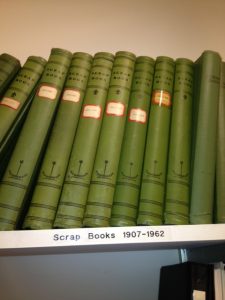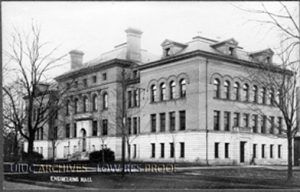In 1950, Nathan M. Newmark began work on perhaps the most important project of his career—the design and construction of the earthquake-resistant Latino-Americana Tower in Mexico City. This was to be no ordinary building, however, given the difficulties of construction on the city’s unique geological strata prone to seismic activity. As Professor of Civil Engineering, Newmark had been at the University of Illinois since 1930, first as a student and then as a faculty member since 1937. Having a reputation as a brilliant researcher, Newmark’s expansive knowledge of structural engineering earned him many accolades. Shortly after the 43-story building was completed in 1957, a 7.9 magnitude earthquake struck Mexico City. Amid the destruction, the Latino-Americana building remained standing and intact, “as a symbol of the value of painstaking attention to detail in aseismic design.”[1]

Newmark, like many people who shaped, and were shaped by, the College of Engineering, represents the ingenuity and culmination of collaborative research that characterizes the spirit of Engineering at the University of Illinois. Similar stories of innovation can be found on the pages of Kingery et al.’s 1967 publication, Men and Ideas in Engineering: Twelve Histories from Illinois, and alumnus and Professor Ira O. Baker’s 1947 two-volume and 1,075 page tome, A History of the College of Engineering of the University of Illinois, 1868-1945. Both publications have proven to be indispensable resources on the history of the College of Engineering, highlighting the achievements of faculty, staff, and students.
While these two books certainly yield a telling glimpse into Engineering at the U of I, the University Archives contain records and personal papers that also extensively shed light on this history, including Newmark’s career and research. Thanks to the recent and generous support of the College of Engineering and then-Dean Ilesanmi Adesida, documentation of this history will become considerably richer and more accessible to researchers over the next few years as more paper records and born-digital content are transferred to the University Archives. The goal is to unearth hidden records that continue to transform our understanding of the College of Engineering’s seminal role in the history of science and technology and the development of the University of Illinois as a premier research institution.

Though I am initially arranging and describing administrative records transferred from the Dean’s Office, I will also be working with faculty to transfer their papers to the University Archives. These archival documents will complement the Archives’ already substantial holdings, including F. Wheeler Loomis’ papers relating to his tenure as department head and the growth of the Department of Physics, and the papers of Jakob Kunz, which chronicle his work on the photoelectric cell. The records will also provide more insight into the innovative research programs of the Engineering Experiment Station, the impact of research projects such as the plasma-display and PLATO (Programmed Logic for Automatic Teaching Operations) system on the facilitation of computer-based learning in the classroom, and the influence of such large-scale political events as the two World Wars on engineering coursework and research. In addition to the ground-breaking work of the College’s twelve departments and multidisciplinary research centers and laboratories, the records trace the evolution of the engineering curriculum, the College’s international scope and student body, and a commitment to fostering diversity and gender equity in the engineering profession.
Above all, these records convey the story of the relationship between engineers, the University, and society. The legacy of the U of I’s College of Engineering is evident in the infrastructures of modern cities and transportation systems, the development of agricultural industries, and advances in artificial intelligence, network technologies, and nuclear energy, to name a few. Engineering’s records facilitate our understanding of the breakthroughs, struggles, and collaborations that led to scientific and technological advancements. The College’s profound impact was recognized as early as 1914, when Dean W. F .M. Goss proudly wrote in The Technograph: “achievements of the engineer are affecting the lives and occupations of mankind.”[2]

Echoing the sentiments of the first University of Illinois Archivist, Maynard Brichford, I hope the records unveiled through this project will continue to inspire the scholarly study of the history of science and technology and the importance of engineers being cognizant of the history of not only their profession, [3] but also of the accomplishments and inventions that changed society. No doubt, the histories written in 1947 and 1967 will continue to tell the story of the College, though so many more records have yet to be discovered and made accessible, revealing untold stories. As I embark on this project to preserve and enhance access to these records, I look forward to learning more about the people who created the College of Engineering—the visionary, pioneering, and dedicated people whose innovations have fundamentally changed industries, technologies, and the nature of scientific research.
[2] W. F. M. Goss, “Recent Progress in Engineering,” The Technograph 29, 1914-1915, p. 10, Record Series 11/1/52, University of Illinois Archives.